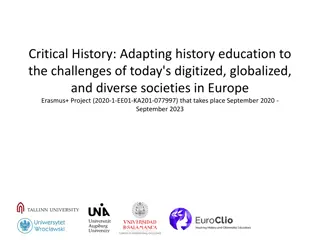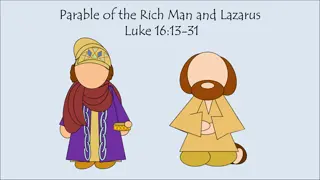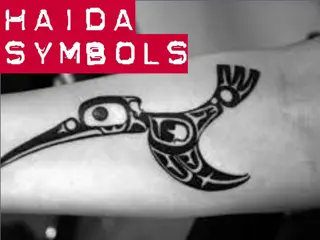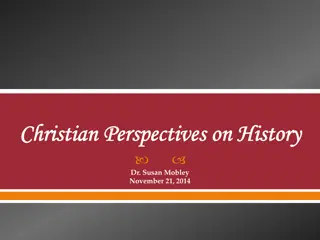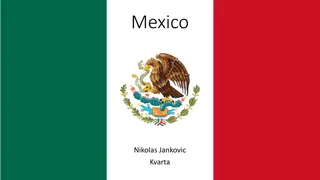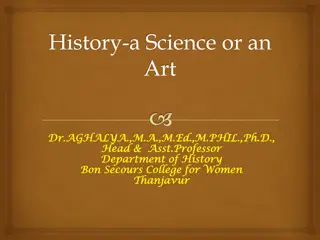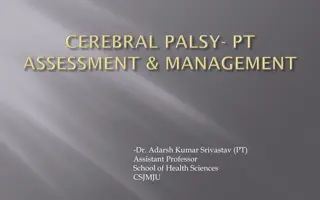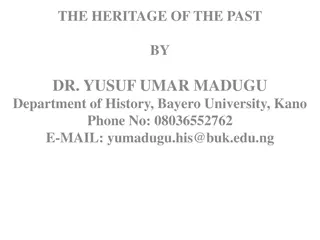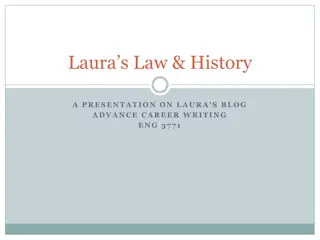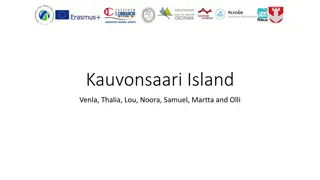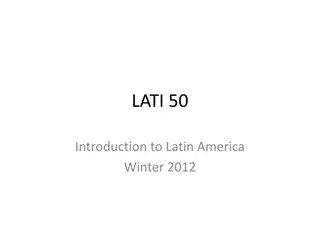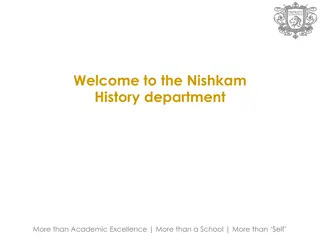Explore the Rich History of Samarkand
Samarkand, known for its ancient roots and diverse cultural influences, holds a special place as a city unscathed by severe summer conditions. The name derives from Semer meaning city and kant meaning settlement. Founded by Persian and Turkish rulers, Samarkand's legacy includes being a strategic outpost and a key trade center along the Silk Road. Discover its lush landscapes, old ruins, and the legendary figures that shaped its history.
Download Presentation

Please find below an Image/Link to download the presentation.
The content on the website is provided AS IS for your information and personal use only. It may not be sold, licensed, or shared on other websites without obtaining consent from the author. Download presentation by click this link. If you encounter any issues during the download, it is possible that the publisher has removed the file from their server.
E N D
Presentation Transcript
What is the meaning of Samarkand Samarkand is known as Maracanda on Greek dates, K'ang and Hsi-wan-chin in Chinese vek n mas. The name Samarkand consists of Semer which means city in So dca and the word kant which means settlement .
Samarkand is one of the rare cities that are not affected by the severe summer heat and drought thanks to the Zeref n river and the canals fed from this river. According to the advice of Islamic geographers, it is one of the most beautiful cities with its streams, lush vegetation and clean air, suitable for a healthy life.
Old name of Samarkand Samarkand was first established in a high position overlooking the valley on the southern shore of the river Zeref n, and its ruins, which have survived to the present day, are called Efr siy b.
Who is Efrasiyab He founded the city before 535 BC as an advanced outpost by the Persian Ruler, Great Cyrus. The legendary Turkish ruler Efr siy b (Alp Er Tunga), named after the remains of Samarkand, dominated the region where the city was founded approximately two centuries before this date.
Alexander the Great, who took Samarkand from the Persians in 329 BC, destroyed the city due to the uprisings against him. However, he thought that Samarkand would be a good fortification for the attacks coming from outside, and surrounded it with a large wall.
The mportance of Samarkand The fact that it is located in a perfect geography, which is the intersection point of very important trade routes coming from Iran, the Silk Road, Turkish countries, Spice road, Merv and Buhara, has made Samarkand an important cultural and commercial center.
Gktrk state, who seized Samarkand in 562, assigned the Samarkand, who are good merchants and know the surrounding countries, at the embassy committees. After the fall of the West G kt rk State in 659, the city came under the domination of the Chinese.
SEMERKANT'S MEETING WITH ISLAM Governor of the Umayyads, Khorasan Said b. Osman organized an expedition on Samarkand in 676. Peace was made in return for Tarh n, the King of Samarkand, to accept taxes and give hostages to Muslims (Bel z r , p. 579). Among those who fell martyrs during the siege, It is rumored that the Prophet's uncle, Abbas's son, Kusem, was also present. As a matter of fact, there is a grave in Samarkand that is believed to belong to Kusem.
As a result of the work of the delegations commissioned by Omer b. Abdlazz, many people in Samarkand and its surroundings entered Islam. 30 thousand troops formed from Sogdi soldiers at the time of Kuteybe gained an important place in the Islamic army.
Imam Bukhari Monument Complex
Samarkand in the period of Samanoullar In the time of Samano ullar , the capital was moved to Bukhara. It can be seen that the governors of Samarkand entered into a struggle of domination against Bukhara until the collapse of the Samanids at that time. In the period of S m n s, Samarkand became one of the most important centers of the Islamic world in terms of science, culture and economy.
PROPERTIES OF THE SAMANOULLARI PERIOD During the S m n s, many great academicians were trained in Samarkand. Necmeddin en-Nesef , Abdullah b. Abdurrahman ed-D rim , bn Hibb n, Eb 'l-Leys es- Semerkand and Imam M t r d are the leading ones.
RELIGION AND DEMOGRAPHIC STRUCTURE OF SAMARKAND Eastern Iranian Sogdians made up the majority of the population in Samarkand. In terms of population, Turks were the second and Arabs followed. Religions such as Buddhism, Zoroastrianism, Manichaeism and Christianity were common before the conquest of Muslims. And also during the conquest of the city of Kuteybe ibn Muslim, the majority of the people were Zoroastrians. There were considerable Jews and Christians in Samarkand and its surroundings. IX. In the 15th century there was a Archbishop of Nestri in Samarkand.
Mongolian invasion Samarkand XIII, which was ruled by the Seljuk Sultan Melikshah in 1074 and 1089. It came under the sovereignty of H rizm ahlar at the beginning of the century. H rizm ah Alaeddin Muhammed ibni Teki , who made Samarkand the capital of his state, could not hold before Mongolian Ruler Genghis Khan. Cengiz Han, walking on Samarkand after Bukhara, destroyed the city in March 1220. While all those who resisted were massacred, a significant part of the people were exiled from the city. For over a century, Samarkand could not erase the traces of this destruction.
CAPITAL OF TIMUR: SAMARKAND XIV. The reconstruction and the second bright period of Samarkand, which had a troubled period due to the struggle of the Mongol inns until the last quarter of the century, started with Emir Timur, who took over M ver nnehir in 1369, made Samarkand as the capital and gathered scholars and artisans from various regions. The historical buildings that survive today are mostly works of Emir Timur and his grandchildren.
Famous observatory with the palace named ihilstun built by Ulu Bey, is among the most important works of this period. Ulu Bey Observatory is a 3 storey observatory. Famous astronomers of the time in the this observatory, Ali Ku u, Bursal Kad zade Rumi, G yaseddin Cem id worked.
EYBANLER Captured by the Uzbek ruler eyb n Han in 1500, Samarkand remained under the administration of the Uzbek inns until 1868. The Uzbeks, who ruled the country from Bukhara, attached importance to the development of their capitals. This is why Samarkand was neglected and remained in the shadow of Bukhara.
Today Russians advancing on the lands of Mavaraunnehir captured Samarkand on 14 May 1868 and included it in the Turkistan general administrative region. Today, Samarkand is the center of twelve administrations of the Republic of Uzbekistan, which declared its independence on September 1, 1991, and its economy is largely based on the surrounding agriculture, and the industry has developed. It is also famous for its carpet and ceramic.
Resources https://islamansiklopedisi.org.tr/semerkant https://www.islamveihsan.com/semerkant-tarihi.html https://www.bbc.com/turkce/haberler/2016/01/160113_vert_tra_semerkant https://en.m.wikipedia.org/wiki/Samarkand https://kulturveyasam.com/9-madde-ile-kadim-zamanlarin-sehri-semerkant/












